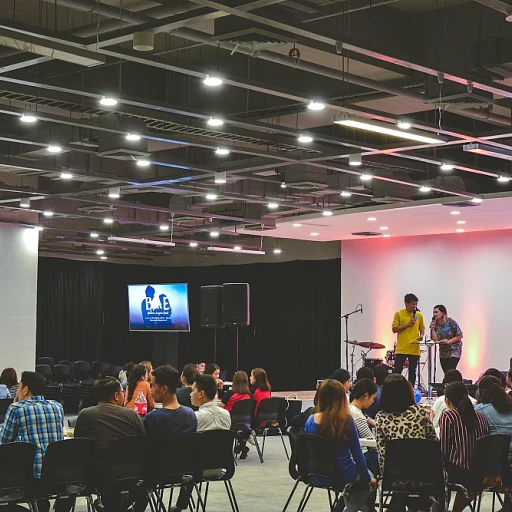
Defining LOA in a Business Context
Defining Leave of Absence (LOA) and Its Business Significance
Understanding what a Leave of Absence (LOA) entails is crucial for businesses. LOA represents a period during which an employee is permitted to be away from work, often formalized through a legal document like a letter of authorization. These leaves can vary in nature, encompassing medical leave, jury duty, and even voluntary time off. It’s essential for businesses to grasp not only the concept of LOA but its implications on energy and workflow within the organization. Leaves of absence are not simply about employees taking time off. They reflect a deeper management function involving agreements and terms conditions established between the company and the employee. Such regulatory forms, whether it results in temporary loss of labor or involves the Family Medical Leave Act (FMLA), can impact overall business operations. Moreover, an LOA affects the dynamic with service providers and energy suppliers by altering demands. Missing an employee, even temporarily, requires a strategic approach to rearrange tasks, roles, and possibly step-up workflows to maintain service levels. For businesses, parsing the terms and conditions, along with the intricacies of individual leave cases, is vital. Effective strategies for managing late employee alerts can also greatly support these efforts. In conclusion, while LOAs support employee well-being, the business must be proactive in handling them to ensure minimal disruption. By understanding the broader business implications of LOA, human resources communication can take definitive steps to mitigate potential challenges.The Role of HR in Managing LOA
Key Responsibilities of HR in Overseeing Leave of Absence
Managing a Leave of Absence (LOA) effectively is a critical role of Human Resources (HR), requiring seamless coordination between various stakeholders. The responsibilities HR must uphold are vital in safeguarding both the employee's right to a leave and the company's operational efficiency.- Documentation and Legal Compliance: HR is tasked with ensuring compliance with legal mandates such as the Family Medical Leave Act (FMLA). This involves preparing the necessary legal documents, including the letter of authorization, letter of agreement, and terms and conditions for various leave types like medical leave or jury duty.
- Clear Communication Channels: Developing effective communication strategies is crucial. HR must act as the primary point of contact, articulating leave policies and addressing employee queries regarding their LOA forms and absence leave processes.
- Coordination with External Agencies: HR sometimes collaborates with external service providers or agencies to facilitate LOA, especially if an agreement LOA with third-party vendors like energy suppliers or insurance agents is involved.
- Monitoring and Adjusting Workflows: During a leave, HR must adjust workflows to accommodate absent employees, ensuring that service levels are maintained through a strategic allocation of duties.
- Employee Support and Re-integration: Post-LOA, HR supports the returning employee to smoothly reintegrate into the workplace. This includes updating them on any service changes or business adaptations that occurred during their absence.
Communication Strategies for LOA
Effective Communication Tactics for Leave of Absence
Managing a Leave of Absence (LOA) effectively requires a well-structured communication strategy. The role of HR is pivotal in ensuring that all parties involved, from employees to service providers, understand the terms and conditions of the leave. This involves crafting clear and concise communication that addresses the needs of both the business and the employee.
Here are some key strategies to consider:
- Develop Clear Policies: Ensure that your LOA policies are clearly documented and easily accessible. This includes outlining the process for requesting a leave, the types of leaves available (such as FMLA, medical leave, jury duty), and the necessary forms and legal documents required.
- Use Multiple Channels: Utilize various communication channels to disseminate information about LOA. This can include emails, intranet postings, and physical letters of authorization. The goal is to reach employees through their preferred method of communication.
- Personalized Communication: Tailor your communication to address individual employee situations. For instance, a letter agreement for a medical leave might differ from one for a jury duty leave. Personalization helps in addressing specific concerns and ensures clarity.
- Regular Updates: Keep employees informed about any changes in LOA policies or procedures. This is particularly important if there are updates from external agencies or changes in service providers that might affect the leave process.
- Training for HR Agents: Equip HR agents with the necessary training to handle LOA inquiries effectively. They should be well-versed in the business implications of LOA and capable of guiding employees through the process.
By implementing these strategies, businesses can minimize disruptions caused by employee absences and maintain a productive work environment. For more insights on how HR evaluates job abandonment before hiring, you can explore this resource.
Impact of LOA on Business Operations
Operational Challenges and Solutions
Leave of Absence (LOA) can significantly impact business operations, especially when not managed effectively. The absence of key employees can disrupt workflows, delay projects, and increase the workload on remaining staff. This is particularly true in small businesses where each team member plays a critical role. To mitigate these challenges, businesses need to develop robust strategies that ensure continuity and minimize disruptions.
Ensuring Continuity During Absences
One effective approach is cross-training employees to handle multiple roles. This strategy ensures that when an employee is on leave, others can step in to cover essential tasks. Additionally, maintaining a clear letter of agreement with employees regarding their roles and responsibilities during an LOA can help set expectations and reduce confusion.
Leveraging Technology and External Resources
Technology can also play a crucial role in managing the impact of LOA on business operations. Implementing project management tools can help track progress and allocate resources efficiently. Moreover, businesses might consider engaging service providers or agency LOA to temporarily fill gaps. This approach not only helps maintain productivity but also allows for specialized skills to be brought in when needed.
Balancing Operational Needs with Employee Well-being
While addressing operational challenges, it’s essential to balance these with employee needs. Offering flexible work arrangements or voluntary time off can help employees manage their personal obligations without compromising business goals. This balance is crucial for maintaining employee morale and reducing turnover, ultimately benefiting the business in the long run.
By proactively addressing the operational impacts of LOA, businesses can not only ensure continuity but also foster a supportive work environment that values employee well-being.
Balancing Employee Needs and Business Goals
Finding the Right Balance
Balancing employee needs and business goals when it comes to Leave of Absence (LOA) is a delicate act. On one hand, employees require time off for various reasons such as medical leave, jury duty, or personal matters. On the other hand, businesses must maintain operational efficiency and meet their objectives. The key is to find a middle ground where both parties feel their needs are respected and met.
Understanding Employee Needs
Employees may need to take a leave of absence for different reasons, and understanding these needs is crucial. Whether it's a medical leave under FMLA or a personal leave, the reasons can vary widely. HR professionals should ensure that the terms and conditions of any leave agreement are clear and that employees feel supported during their absence. This involves not just providing the necessary forms and legal documents but also offering guidance and support through the process.
Maintaining Business Operations
While accommodating employee leaves, businesses must also ensure that operations continue smoothly. This might involve redistributing workloads, hiring temporary staff, or adjusting project timelines. Effective communication with service providers, suppliers, and agents is essential to manage these changes seamlessly. An agency LOA or a letter of authorization might be necessary to delegate responsibilities during an employee's absence.
Steps for Effective Balance
- Develop Clear Policies: Ensure that LOA policies are well-documented and communicated to all employees. This includes the process for applying for leave, the documentation required, and the steps involved in returning to work.
- Flexible Work Arrangements: Consider offering flexible work arrangements where possible. This can help employees manage their personal commitments while still contributing to the business.
- Regular Communication: Keep the lines of communication open between HR, employees, and management. Regular updates and check-ins can help address any concerns and ensure that everyone is on the same page.
- Utilize Technology: Use technology to streamline the LOA process. Online forms, automated notifications, and digital tracking can make managing leaves more efficient for both employees and HR.
By taking these steps, businesses can effectively balance the needs of their employees with their operational goals, ensuring a harmonious and productive work environment.
Future Trends in LOA and HR Communication
Emerging Trends Shaping the Future of LOA in HR
As businesses continue to evolve, so too does the landscape of Leave of Absence (LOA) management. The future of LOA in HR communication is being shaped by several key trends that organizations need to be aware of to remain competitive and compliant.
Integration of Technology and Automation
One of the most significant trends is the integration of technology and automation in managing LOA. With the advent of sophisticated HR software, businesses can streamline the LOA process, from submitting a leave form to tracking employee absence. This not only saves time but also reduces errors associated with manual processing. Automation allows HR departments to focus more on strategic tasks rather than administrative ones.
Personalized Employee Experience
Another trend is the shift towards a more personalized employee experience. Employees now expect a tailored approach to their LOA needs, whether it’s a medical leave, jury duty, or any other type of absence. HR departments are increasingly using data analytics to understand employee patterns and preferences, allowing them to offer more customized solutions that align with both employee needs and business goals.
Enhanced Communication Channels
Effective communication remains a cornerstone of successful LOA management. The future will see a greater emphasis on enhancing communication channels between HR, employees, and other stakeholders like energy suppliers and service providers. This includes utilizing digital platforms to ensure timely and clear communication regarding leave policies, terms conditions, and any changes in service or agreement LOA.
Focus on Compliance and Legal Frameworks
With regulations like FMLA and other legal documents governing employee leave, staying compliant is crucial. Future trends indicate a stronger focus on aligning LOA policies with legal requirements to avoid potential pitfalls. HR professionals will need to stay updated on legal changes and ensure that their LOA policies are in line with current laws.
Proactive Management of Workforce Absence
Lastly, there is a growing trend towards proactive management of workforce absence. This involves not just reacting to leave requests but anticipating them and planning accordingly. By understanding the patterns of leaves absence, businesses can better manage their resources and minimize disruptions to operations. This proactive approach helps in balancing employee needs with business objectives effectively.
In conclusion, the future of LOA in HR communication is set to be more dynamic and responsive, driven by technology, personalization, and a strong focus on compliance. Organizations that adapt to these trends will be better positioned to manage their workforce efficiently and maintain a harmonious balance between employee satisfaction and business success.












